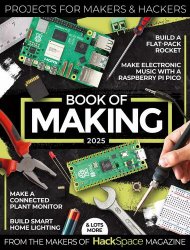 Название
Название: Intelligent Photonics Systems: Technology and Applications
Автор: Manish Tiwari, Ghanshyam Singh, Ankur Saharia
Издательство: CRC Press
Год: 2025
Страниц: 165
Язык: английский
Формат: pdf (true), epub
Размер: 22.9 MB
The text comprehensively discusses the implementation of sensor systems using Artificial Intelligence (AI), quantum device and circuit with Artificial Intelligence, and biomedical implementation of Artificial Intelligence-based optoelectronic circuits. It covers important topics such as photonic communication, optical and photonics neural networks, neuromorphic computing, quantum optics, and Artificial Intelligence leap in optical sensors, including biophotonics. Artificial Intelligence (AI) entities and systems have the capability to mimic biological processes, particularly human cognitive processes, in order to carry out tasks that include learning and decision-making. AI applications, such as personal assistants, smart vehicles, purchase prediction, speech rec- ognition, smart home devices, and wearable devices, are nearly everywhere, and similar AI-based techniques are already transforming our daily lives by enhancing human productivity, safety, and health, even impacting the way we entertain and communicate. Wearable electronics, which combine mechanical flexibility and electronic functionality, have seen significant growth and progress in recent years. Wearable electronics are poised to offer the same features as traditional rigid electronics, but in a more comfortable manner.
 Название: Mastering ESP32-Cam from Basics to Advanced Projects: A Comprehensive Guide to Web Servers, Streaming, Robotics, and IoT
Название: Mastering ESP32-Cam from Basics to Advanced Projects: A Comprehensive Guide to Web Servers, Streaming, Robotics, and IoT

 Название: Comprehensive Semiconductor Science and Technology, 2nd Edition (3 Vols. Set)
Название: Comprehensive Semiconductor Science and Technology, 2nd Edition (3 Vols. Set) Название: Mac for Beginners - 21st Edition 2025
Название: Mac for Beginners - 21st Edition 2025 Название: iPad For Beginners - 21st Edition 2025
Название: iPad For Beginners - 21st Edition 2025



 Название: Bauen Sie Ihren eigenen PC fur Einsteiger - Februar 2025
Название: Bauen Sie Ihren eigenen PC fur Einsteiger - Februar 2025